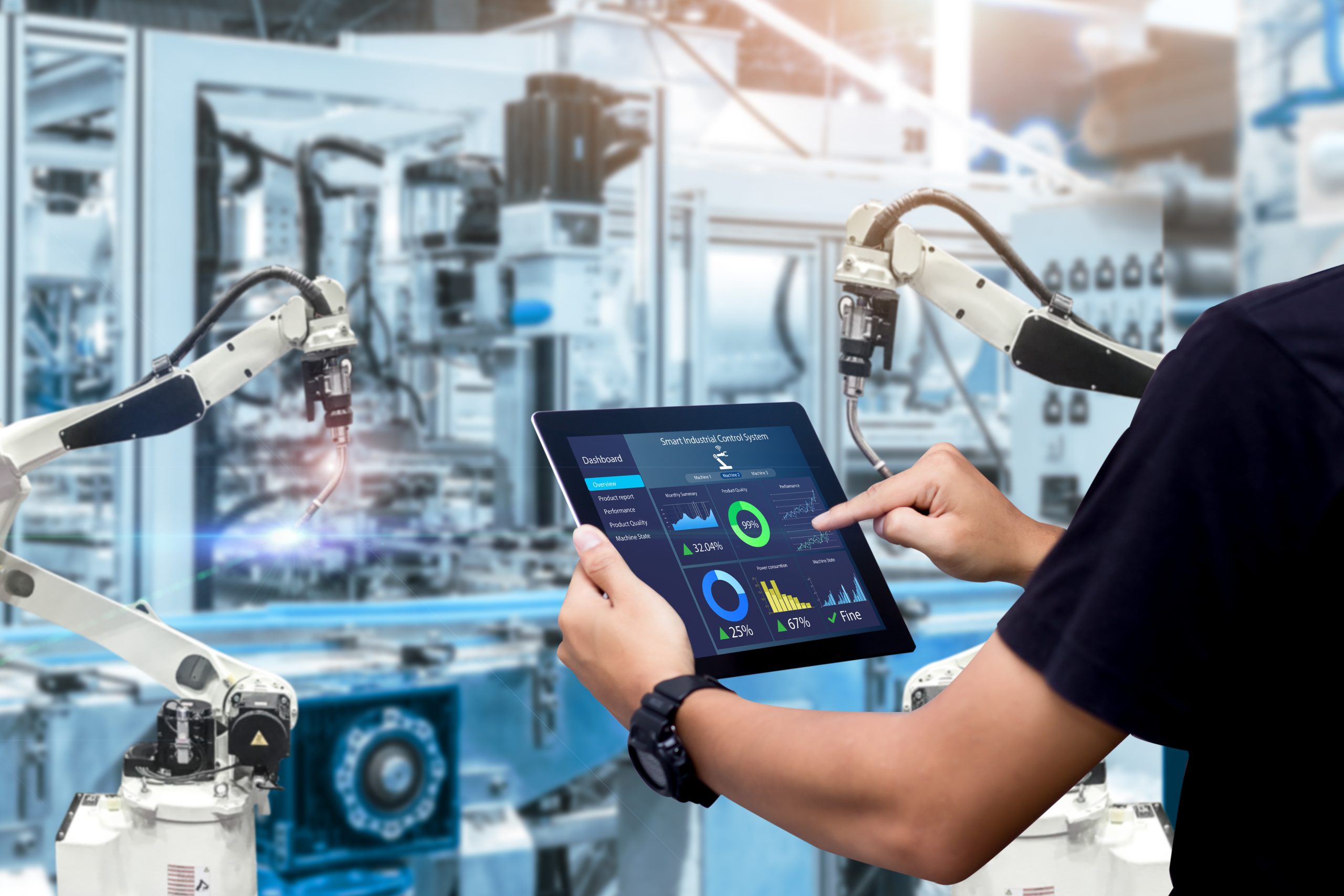Advanced robotics represents a groundbreaking technological advancement that is revolutionizing diverse industries, from manufacturing and logistics to healthcare and personal assistance. In this article, we explore the multifaceted of advanced robotics, highlighting their evolution from industrial automation to the integration of robots into everyday life for personalized services and enhanced human-robot interactions.
Evolution of Advanced Robotics:

The evolution of advanced robotics has seen a paradigm shift in robotic design, functionality, and capabilities, driven by technological advancements in artificial intelligence, machine learning, sensor fusion, and robot-human interaction modalities. Advanced robotics are equipped with sophisticated sensors, intelligent algorithms, and adaptive control systems that enable them to perform complex tasks with precision, efficiency, and agility, marking a new era of robotics innovation and application.
Advanced Robotics in Manufacturing Automation:
One of the primary domains where advanced robotics excel is in manufacturing automation, where robots perform a wide range of tasks, including assembly, welding, material handling, and quality control with speed and accuracy. Advanced robotics in manufacturing streamline production processes, enhance productivity, and improve product quality by automating repetitive tasks, reducing human error, and enabling flexible manufacturing systems that adapt to changing production requirements efficiently.
Robotics in Logistics and Warehousing:
Advanced robotics are reshaping logistics and warehousing operations by introducing autonomous robotic systems for inventory management, order fulfillment, and warehouse optimization. Robotics solutions such as autonomous mobile robots (AMRs), robotic pickers, and automated guided vehicles (AGVs) streamline warehouse operations, increase order fulfillment speed, and optimize inventory tracking, transforming logistics efficiency and supply chain management in a digital age driven by automation and robotics technologies.
Robotics in Healthcare and Surgical Robotics:
The role of advanced robotics in healthcare is expanding rapidly, with robotic-assisted surgeries, telemedicine robots, and robotic exoskeletons revolutionizing patient care, medical procedures, and rehabilitation therapies. Surgical robots enable minimally invasive procedures, precision surgery, and improved patient outcomes, while telemedicine robots facilitate remote consultations and medical interventions, showcasing the potential of robotics in enhancing healthcare delivery, personalized treatments, and medical advancements.
Personal Assistance Robotics:
In personal assistance, advanced robotics are utilized to provide support and services to individuals in various settings, such as homes, hospitals, and public spaces. Personal assistance robots can assist with daily tasks, elderly care, rehabilitation exercises, and companionship, enhancing quality of life for users and promoting independent living through robotic assistance that adapts to individual needs, preferences, and mobility requirements, signaling a shift towards human-centric robotic applications in everyday life.
Advanced Robotics in Education and Research:
Advanced robotics play a vital role in education, research, and innovation, providing platforms for hands-on learning, experimental studies, and collaborative research projects in STEM fields. Educational robots, research robots, and programmable robot kits enable students, researchers, and innovators to explore robotics principles, practice coding skills, and develop innovative robotic applications that drive technological advancements, inspire creativity, and shape the future of robotics in academia and industry.
Robotics in Agriculture and AgTech:

In agriculture and AgTech, advanced robotics are transforming farming practices, crop monitoring, and agricultural operations, enhancing efficiency, sustainability, and yield optimization in food production systems. Agricultural robots, drones, and robotic harvesters enable precision farming, soil analysis, planting, and harvesting activities with precision and automation, augmenting traditional farming methods with robotic technologies that improve resource management, reduce environmental impact, and address labor shortages in the agricultural sector.
Robotics in Space Exploration and Planetary Research:
Advanced AI Technology are instrumental in space exploration missions, planetary research endeavours, and extraterrestrial exploration activities, where robots perform critical tasks in hazardous environments and remote locations that are inaccessible to humans. Space robots, rovers, and drones are deployed for scientific exploration, sample collection, and infrastructure development on celestial bodies, paving the way for space colonization, planetary discovery, and scientific breakthroughs that expand our knowledge of the universe and advance human exploration beyond Earth.
Ethical Considerations and Future Implications:
As advanced robotics continue to evolve and integrate into various aspects of society, ethical considerations, privacy concerns, and societal impacts of robotics technologies are paramount. Addressing issues such as robotics ethics, data privacy, job displacement, and algorithm bias is essential to ensure responsible development, deployment, and regulation of robotics applications in a rapidly evolving technological landscape, fostering a human-centered approach to robotics innovation that prioritizes ethical values, social well-being, and collaborative coexistence between humans and robots in a future shaped by robotics advancements.
Conclusion:
Advanced robotics have transcended traditional boundaries, expanding their applications from manufacturing automation to personal assistance, healthcare, education, and space exploration, reshaping industries, transforming daily life activities, and enhancing human-robot interactions in a dynamic and interconnected world. By embracing the potential of advanced robotics, organizations, researchers, and innovators can unlock new possibilities, drive technological advancements, and harness the transformative power of robotics technologies to create a future where human-machine synergies, innovative solutions, and collaborative robotics pave the way




